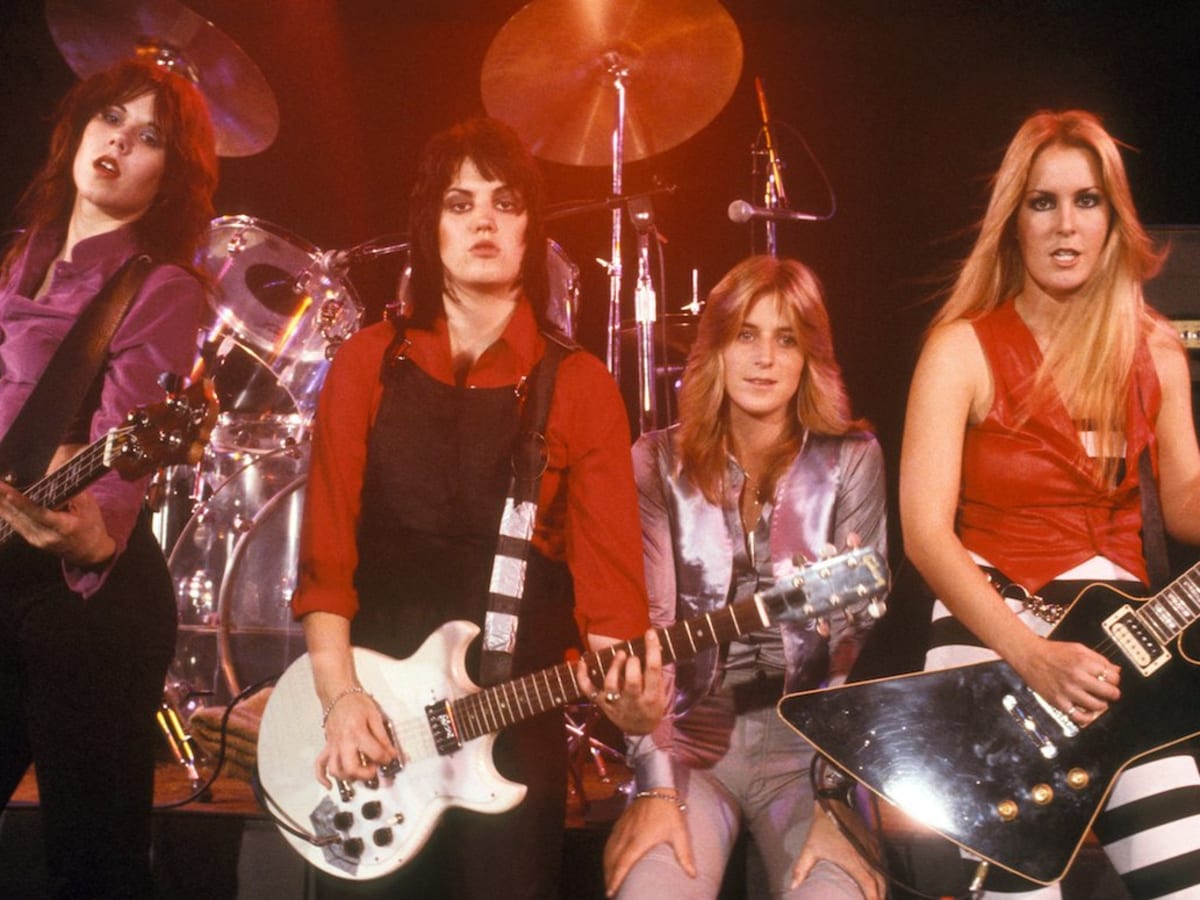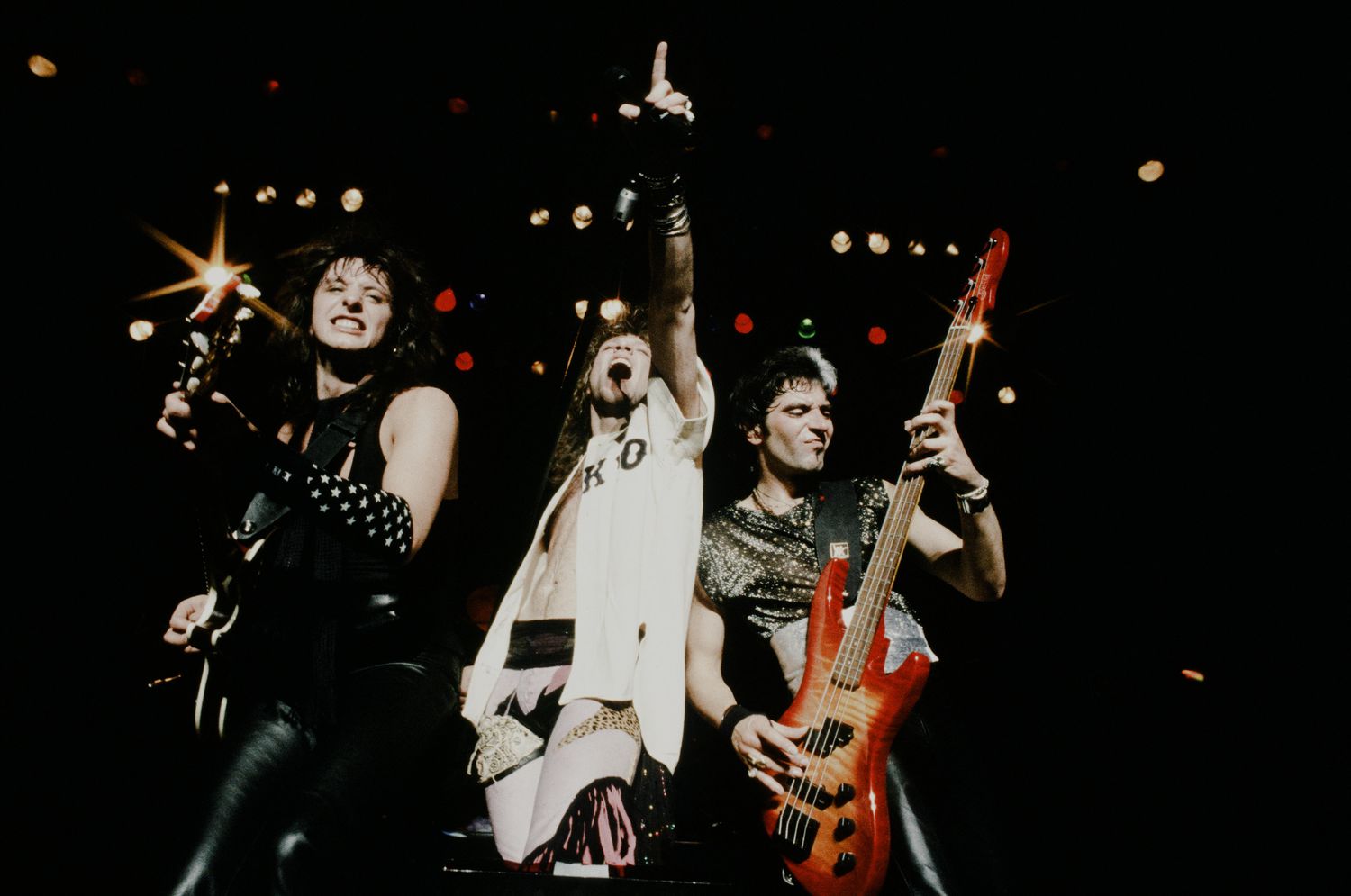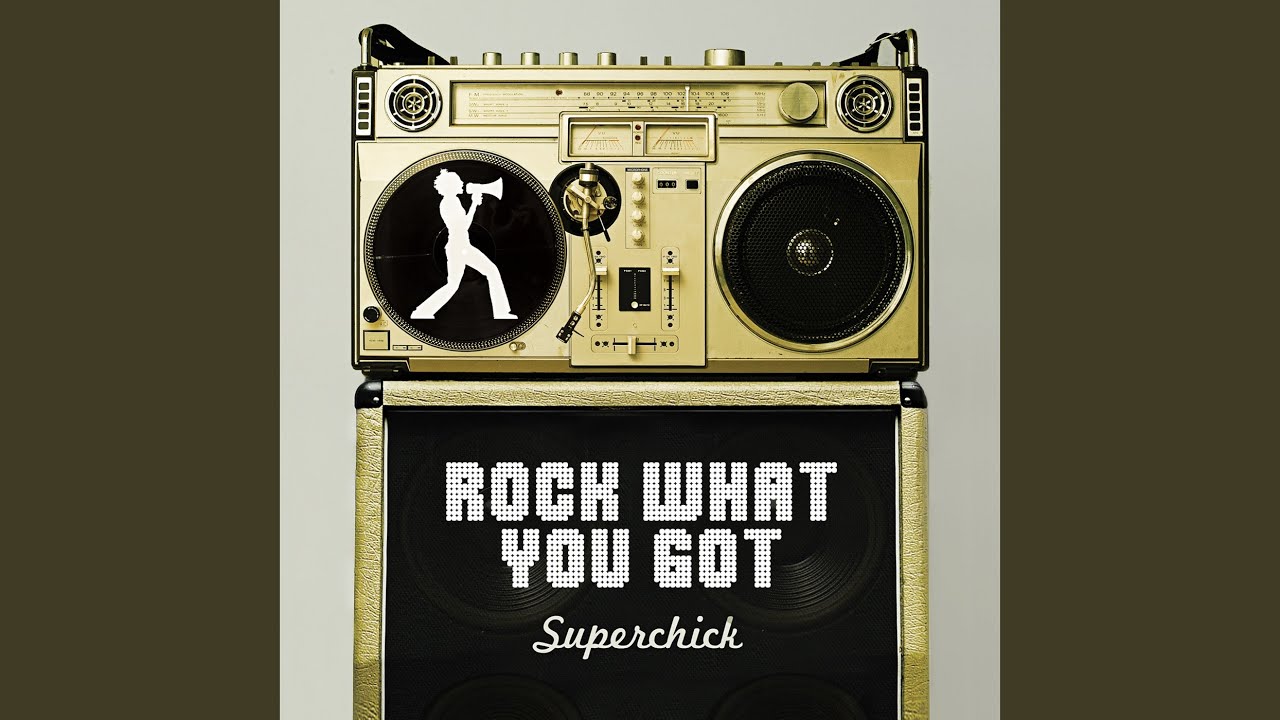

Rock
What Is Progressive Rock Music
Modified: February 24, 2024
Discover the history and unique characteristics of Progressive Rock music, a genre that has pushed the boundaries of Rock music with its complex compositions, intricate instrumentation, and thought-provoking lyrics.
(Many of the links in this article redirect to a specific reviewed product. Your purchase of these products through affiliate links helps to generate commission for AudioLover.com, at no extra cost. Learn more)
Table of Contents
- Introduction
- Definition of Progressive Rock Music
- Historical Background
- Characteristics of Progressive Rock Music
- Influences and Genre Fusion
- Key Figures and Bands in Progressive Rock
- Instrumentation and Musical Techniques
- Lyrical Themes in Progressive Rock
- Criticisms and Controversies
- Evolution and Current State of Progressive Rock Music
- Conclusion
Introduction
Progressive Rock, often referred to as Prog Rock, is a genre of music that emerged in the late 1960s and gained significant popularity in the 1970s. It is characterized by its intricate compositions, unconventional song structures, and a fusion of various musical genres. Progressive Rock has been known to push the boundaries of traditional rock music, incorporating elements of classical, jazz, folk, and even avant-garde music.
What sets Progressive Rock apart from other genres is its emphasis on complexity and technical proficiency. Musicians in this genre often display exceptional skill on their instruments, creating intricate melodies and complex harmonies. The use of unconventional time signatures, extended instrumental solos, and concept albums are also common features of Progressive Rock music.
The origins of Progressive Rock can be traced back to the British rock scene of the 1960s, which was heavily influenced by the experimentation of bands like The Beatles, The Rolling Stones, and The Who. These artists began incorporating elements of classical music and experimenting with different musical structures and arrangements.
Progressive Rock gained mainstream success in the early 1970s, with bands like Pink Floyd, Yes, Genesis, and King Crimson leading the way. These bands pushed the boundaries of rock music, creating epic compositions that often extended beyond the traditional song length. They incorporated complex instrumental passages, elaborate arrangements, and thought-provoking lyrics, setting the stage for the development of the genre.
Throughout its history, Progressive Rock has gone through various waves of popularity. It experienced a decline in the late 1970s with the rise of punk and new wave, but saw a resurgence in the 1980s and 1990s with bands like Marillion and Dream Theater. Today, Progressive Rock continues to evolve and thrive, with new bands incorporating modern elements and pushing the boundaries of the genre even further.
In this article, we will explore the definition of Progressive Rock, delve into its historical background, examine its key characteristics, and highlight some of the influential bands and figures in the genre. We will also discuss the instrumentation and musical techniques commonly used in Progressive Rock, as well as the lyrical themes and the criticisms it has faced over the years. Lastly, we will take a look at the current state of Progressive Rock and its place in the contemporary music scene.
Definition of Progressive Rock Music
Progressive Rock, often referred to as Prog Rock, is a genre of music that defies easy categorization. It is characterized by its fusion of various musical styles, intricate compositions, and unconventional song structures. Progressive Rock is known for its ambitious and complex nature, pushing the boundaries of traditional rock music.
At its core, Progressive Rock is about experimentation and innovation. It emphasizes the exploration of different musical avenues and the integration of diverse influences. The genre is often characterized by its willingness to break away from the three-minute pop song format and delve into longer, more expansive pieces.
One of the defining features of Progressive Rock is its emphasis on instrumental virtuosity. Musicians in this genre showcase their technical skills by incorporating complex guitar solos, keyboard passages, and intricate drumming patterns. The aim is to create a rich and layered sound that captivates the listener and takes them on a musical journey.
Another distinguishing aspect of Progressive Rock is its incorporation of classical music elements. Many Progressive Rock compositions feature orchestral arrangements, symphonic structures, and the use of classical instruments such as the violin, cello, or flute. This infusion of classical elements adds depth and sophistication to the music, blurring the lines between rock and classical genres.
Lyrically, Progressive Rock often explores deep and philosophical themes. The genre’s lyrics can touch upon social issues, existential questions, and even fantastical storytelling. The aim is to provoke thought and create a sense of emotional connection between the audience and the music.
It is important to note that the definition of Progressive Rock is not confined to a specific sound or set of rules. The genre is broad and encompasses a wide range of musical styles and subgenres. The term “progressive” itself suggests a progression, a constant evolution and experimentation within the genre. As a result, Progressive Rock can incorporate elements of jazz, folk, blues, metal, and even electronic music.
In essence, Progressive Rock is a genre that pushes the boundaries of rock music, embracing complexity, technical proficiency, and a spirit of experimentation. It is a genre that rewards careful and active listening, offering a rich and diverse musical experience that continues to captivate audiences to this day.
Historical Background
The roots of Progressive Rock can be traced back to the mid-1960s, when various British bands began experimenting with new sounds and musical structures. During this time, the traditional pop and rock music scene was being challenged by the emergence of bands like The Beatles, The Rolling Stones, and The Who, who were pushing the boundaries of what was considered mainstream music.
One of the key precursors to Progressive Rock was the British band The Moody Blues. Their 1967 album “Days of Future Passed” is often cited as a landmark release in the genre. It combined orchestral arrangements and psychedelic rock, creating a sound that was rich in texture and ambition.
However, it was the release of Pink Floyd’s album “The Piper at the Gates of Dawn” in 1967 that truly set the stage for the rise of Progressive Rock. The album, featuring the brilliant songwriting and experimental soundscapes of Syd Barrett, showcased a level of artistic freedom and innovation that would become synonymous with the genre.
As the 1970s approached, Progressive Rock gained significant traction and popularity. Bands like Yes, Genesis, and King Crimson emerged, each bringing their own unique take on the genre. These bands shared a common desire to push the boundaries of rock music and create epic compositions that challenged traditional song structures.
One of the defining moments in the history of Progressive Rock was the release of Pink Floyd’s album “The Dark Side of the Moon” in 1973. It became one of the best-selling albums of all time, showcasing the genre’s ability to combine catchy melodies with complex arrangements and thought-provoking lyrics.
The genre continued to evolve and diversify throughout the 1970s. The emergence of bands like Emerson, Lake & Palmer, Jethro Tull, and Rush added elements of jazz, classical, and folk to the sound of Progressive Rock. These bands took the virtuosity of their musicians to new heights, creating symphonic compositions and incorporating unconventional instruments into their music.
However, as the 1970s came to a close, the popularity of Progressive Rock began to decline. The rise of punk and new wave music challenged the longer, more elaborate compositions of the genre. Many saw Progressive Rock as self-indulgent and disconnected from the energy and rebellion of the punk movement.
Nonetheless, Progressive Rock found new life in the 1980s and 1990s, with bands like Marillion, Dream Theater, and Porcupine Tree carrying the torch and adding modern elements to the genre. Today, Progressive Rock continues to thrive, with a diverse range of bands and artists pushing the boundaries and keeping the spirit of innovation alive.
Characteristics of Progressive Rock Music
Progressive Rock is a genre characterized by a distinct set of musical features that set it apart from other genres. These characteristics contribute to the complexity, depth, and innovation that define Progressive Rock. Here are some key characteristics of the genre:
- Intricate Compositions: Progressive Rock is known for its complex and intricate compositions. Songs often feature multiple sections, time signature changes, and unconventional song structures. The aim is to create a musical journey that keeps the listener engaged and captivated.
- Instrumental Proficiency: Progressive Rock musicians are renowned for their technical skill and virtuosity. Guitar solos, keyboard flourishes, intricate drumming patterns, and complex basslines are common features in this genre. Musicians often showcase their proficiency on their respective instruments, creating intricate and exciting musical passages.
- Fusion of Genres: Progressive Rock integrates elements from various musical genres, including classical, jazz, folk, and even avant-garde. This fusion of styles adds depth, diversity, and richness to the overall sound of the music.
- Longer Song Lengths: Progressive Rock songs often exceed the conventional three-minute mark. It is not uncommon for songs in this genre to stretch out over 10 minutes or more. This extended song length allows for more exploration and experimentation within the composition.
- Concept Albums: Many Progressive Rock artists create concept albums, which are cohesive works that revolve around a central theme or story. These albums are often meant to be listened to in their entirety, with each song contributing to the overall narrative or concept.
- Use of Unconventional Instruments: Progressive Rock bands are known for incorporating unconventional instruments into their music. This can include instruments like the mellotron, synthesizers, flutes, and violins, which add unique textures and colors to the compositions.
- Complex Lyrics: Progressive Rock lyrics often tackle deep and philosophical themes. The lyrics can be introspective, poetic, and thought-provoking, addressing subjects such as existentialism, social issues, and fantasy storytelling.
- Dynamic Range: Progressive Rock often utilizes a wide dynamic range, moving between soft, mellow passages and explosive, powerful sections. This dynamic contrast adds depth and intensity to the music, creating a dramatic and engaging listening experience.
These characteristics, combined with the genre’s emphasis on innovation and musical exploration, make Progressive Rock a unique and captivating genre that continues to push the boundaries of rock music.
Influences and Genre Fusion
Progressive Rock is a genre that draws inspiration from a wide array of musical influences. It is known for its willingness to experiment and fuse different genres together, resulting in a rich and diverse sound. Here are some of the key influences and genre fusions that have shaped Progressive Rock:
Classical Music: One of the major influences on Progressive Rock is classical music. Bands like Yes and Emerson, Lake & Palmer incorporated symphonic elements, orchestral arrangements, and classical instrumentation into their music. The blend of rock and classical music adds a level of sophistication and grandeur to the genre.
Jazz: Jazz has also had a significant influence on Progressive Rock. Bands like Soft Machine and Mahavishnu Orchestra integrated elements of jazz improvisation, complex chord progressions, and intricate rhythmic patterns into their music. The fusion of jazz and rock led to the development of a subgenre known as jazz fusion.
Folk Music: Progressive Rock has also been influenced by folk music. Bands like Jethro Tull and Genesis incorporated folk elements, such as acoustic guitars, flutes, and storytelling lyrics, into their music. This fusion of folk and rock provided a more organic and earthy sound to the genre.
Avant-Garde and Experimental Music: The experimental nature of Progressive Rock has led to influences from avant-garde and experimental music. Bands like King Crimson and Frank Zappa pushed the boundaries of conventional song structures, incorporating dissonant harmonies, unconventional time signatures, and abstract lyrics into their compositions. This fusion of avant-garde and rock music added a sense of unpredictability and artistic innovation to the genre.
Psychedelia: The psychedelic rock movement of the 1960s also played a role in shaping the sound of Progressive Rock. Bands like Pink Floyd and The Moody Blues incorporated psychedelic elements, such as trippy soundscapes, surreal lyrics, and atmospheric production techniques, into their music. This fusion of psychedelia and progressive elements created a dreamy and immersive musical experience.
Electronic Music: With the advancement of synthesizers and electronic instruments, Progressive Rock began incorporating electronic elements into its sound. Bands like Yes and Tangerine Dream explored the use of synthesizers and electronic effects, pushing the boundaries of the genre and adding a futuristic and atmospheric dimension to the music.
The fusion of these diverse influences has allowed Progressive Rock to evolve and adapt throughout the years. It continues to draw inspiration from various genres and push the boundaries of what is considered traditional rock music. This genre fusion and experimentation have contributed to the richness and innovation that define Progressive Rock.
Key Figures and Bands in Progressive Rock
Progressive Rock has been shaped by the creative vision and musical genius of many influential figures and bands. These artists have pushed the boundaries of the genre, creating groundbreaking music and setting the stage for its evolution. Here are some key figures and bands that have made significant contributions to Progressive Rock:
- Pink Floyd: Pink Floyd is often hailed as one of the pioneers of Progressive Rock. Their experimentation with sound, use of atmospheric textures, and concept albums like “The Dark Side of the Moon” and “Wish You Were Here” revolutionized the genre. Known for their hypnotic melodies and thought-provoking lyrics, Pink Floyd’s music continues to captivate audiences worldwide.
- Yes: Yes is renowned for their intricate compositions, soaring harmonies, and virtuoso musicianship. Albums like “Close to the Edge” and “Fragile” showcase their progressive sound, combining complex song structures with beautiful melodies. Yes played a crucial role in popularizing Progressive Rock in the 1970s and has remained influential in the genre.
- Genesis: Genesis, led by Peter Gabriel and later by Phil Collins, created a unique blend of progressive rock, art rock, and theatrical elements. Their albums “The Lamb Lies Down on Broadway” and “Selling England by the Pound” demonstrated their storytelling abilities and musical dexterity. Genesis’s music was known for its intricate arrangements, imaginative lyrics, and dynamic shifts.
- Emerson, Lake & Palmer: This supergroup brought together keyboardist Keith Emerson, bassist/vocalist Greg Lake, and drummer Carl Palmer. Their fusion of classical music influences, virtuoso performances, and elaborate stage shows made them a prominent force in Progressive Rock. Albums such as “Tarkus” and “Brain Salad Surgery” showcased their technical prowess and grandiose compositions.
- King Crimson: Led by guitarist Robert Fripp, King Crimson pushed the boundaries of Progressive Rock with their bold and innovative sound. Known for their complex and improvisational style, King Crimson’s albums like “In the Court of the Crimson King” and “Red” are regarded as landmarks in the genre. Their experimentation with unconventional song structures and incorporation of jazz and avant-garde elements set them apart.
- Rush: Hailing from Canada, Rush is renowned for their unique blend of Progressive Rock and hard rock. With Geddy Lee’s distinct vocals, Alex Lifeson’s intricate guitar work, and Neil Peart’s virtuosic drumming, Rush created epic compositions and intricate arrangements. Albums like “2112” and “Moving Pictures” solidified their status as one of the most influential bands in Progressive Rock.
These are just a few of the many key figures and bands that have made a significant impact on the Progressive Rock genre. Each artist has brought their unique style, vision, and contribution to the genre, further enriching its diverse and captivating musical landscape.
Instrumentation and Musical Techniques
Instrumentation and musical techniques play a crucial role in shaping the distinct sound and complexity of Progressive Rock. The genre incorporates a wide array of instruments and employs various techniques to create its unique musical landscape. Here are some key aspects of instrumentation and musical techniques in Progressive Rock:
Guitar: The guitar is a fundamental instrument in Progressive Rock, often serving as the main melodic and harmonic driver. Guitarists in this genre are known for their technical proficiency, incorporating intricate fingerpicking patterns, complex chord progressions, and extended guitar solos. Bands such as Pink Floyd, Yes, and King Crimson feature guitar work that ranges from atmospheric and textural to soaring and virtuosic.
Keyboards: Keyboards, including pianos, synthesizers, and organs, play a prominent role in Progressive Rock. These instruments add layers of rich, atmospheric textures and contribute to the genre’s symphonic and grandiose sound. Keyboardists in bands like Emerson, Lake & Palmer and Yes showcase their skill through complex melodies, intricate solos, and the use of a wide range of sounds and effects.
Bass: The bass guitar in Progressive Rock is not just a supporting instrument; it often takes on a melodic and prominent role. Bassists create intricate and complex basslines that interact with the other instruments, providing a foundation and driving force for the music. Artists like Chris Squire of Yes and Geddy Lee of Rush are known for their distinctive and technically demanding bass playing.
Drums: Progressive Rock drumming goes beyond the standard rock beat, incorporating intricate drum patterns, complex time signatures, and progressive fills. Drummers often showcase their technical skills and creativity through extended drum solos and diverse percussion setups. The drumming style of Neil Peart from Rush and Bill Bruford from Yes are examples of the virtuosic and innovative approach to drumming in the genre.
Orchestral Arrangements: Progressive Rock frequently incorporates orchestral arrangements and classical instruments such as strings, woodwinds, and brass. These arrangements add depth, grandeur, and a symphonic quality to the music. Bands like Genesis and The Moody Blues incorporated full orchestras to enhance their compositions, creating a fusion of rock and classical music.
Odd Time Signatures: Progressive Rock is known for its complex time signatures, often deviating from the standard 4/4 time. This use of odd time signatures, such as 7/8, 9/8, and 5/4, creates a sense of musical complexity and adds an unpredictable and progressive quality to the music. Bands like King Crimson and Gentle Giant are known for their intricate and ever-shifting time signature changes.
Musical Dynamics: Progressive Rock incorporates a wide range of dynamics, moving between softer and more intimate passages to powerful and energetic sections. This dynamic variation adds depth and enhances the emotional impact of the music. Bands like Pink Floyd skillfully manipulate dynamics, creating moments of tension and release throughout their compositions.
Layering and Textures: Progressive Rock often utilizes layering techniques to add depth and complexity to the music. This involves layering different instruments, sounds, and melodies to create intricate harmonies and textures. Through the use of studio technology and careful production, bands in the genre create a sonic landscape that immerses the listener in a rich and immersive musical experience.
These instrumentation choices and musical techniques are fundamental to the Progressive Rock sound. The combination of proficient musicianship, intricate compositions, and experimental approaches to instrumentation and technique is what defines the unique and captivating nature of the genre.
Lyrical Themes in Progressive Rock
Progressive Rock is a genre that goes beyond mere musical exploration – it also delves into deep and thought-provoking lyrical themes. The genre’s penchant for complexity and its willingness to push boundaries extends to its lyrics, tackling a wide range of subjects and concepts. Here are some recurring lyrical themes in Progressive Rock:
Existentialism and Self-Exploration: Progressive Rock often explores existential questions about life, identity, and the universe. Lyrics delve into introspection, self-reflection, and the search for meaning and purpose. Bands like Pink Floyd, Yes, and Genesis touch upon these themes, encouraging listeners to ponder their own existence.
Social and Political Commentary: Many Progressive Rock songs take a critical look at society and politics. Lyrics can address themes such as war, inequality, environmental concerns, and the impact of technology on society. Artists like Rush and Jethro Tull have used their platform to raise awareness and spark discussions about social issues through their music.
Fantasy and Mythology: Progressive Rock occasionally draws inspiration from fantasy literature, mythology, and epic storytelling. Bands like Yes and Genesis have incorporated elements of fantasy and mythology into their lyrics, creating vivid and imaginative narratives that transport listeners to otherworldly realms.
Spirituality and Philosophy: Progressive Rock often explores spiritual and philosophical concepts. Lyrics can touch upon ideas of spirituality, metaphysics, and the nature of consciousness. Bands such as King Crimson and Emerson, Lake & Palmer incorporate philosophical and spiritual themes, encouraging listeners to contemplate profound questions about existence and reality.
Personal and Emotional Journeys: Many Progressive Rock songs delve into personal experiences and emotions. Lyrics can convey introspective and introspective narratives of love, loss, and personal struggles. Artists like Peter Gabriel, Steve Hackett, and Steven Wilson explore the depths of human emotions, creating intimate and relatable stories through their lyrics.
Social and Cultural Critique: Progressive Rock doesn’t shy away from critiquing the cultural and societal norms of its time. Lyrics can challenge conventions and question authority, offering alternative perspectives and encouraging listeners to think critically about the world around them. Bands like Pink Floyd and Yes have been known for their social commentary, highlighting the need for change and speaking out against injustice.
Progressive Rock’s lyrical themes often transcend the boundaries of typical rock music. The genre’s willingness to tackle complex and provocative subjects through its lyrics is a testament to its intellectual and artistic nature. It invites listeners to engage with the music on a deeper level and prompts introspection and contemplation.
Criticisms and Controversies
Like any genre of music, Progressive Rock has not been immune to criticisms and controversies throughout its history. While appreciated by many for its ambitious and innovative nature, Progressive Rock has faced its fair share of detractors and challenges. Here are some of the criticisms and controversies associated with the genre:
Elitism and Pretentiousness: One common criticism leveled against Progressive Rock is its perceived elitism and pretentiousness. The genre’s complex compositions, lengthy song structures, and sometimes philosophical lyrics have led some to view it as highbrow and inaccessible. Critics argue that Progressive Rock can be self-indulgent and detached from the mainstream appeal of more straightforward rock music.
Self-Imposed Musical Constraints: Progressive Rock’s emphasis on complexity and technical proficiency can sometimes lead to self-imposed constraints. Critics argue that bands in the genre can become too focused on virtuosic performances and intricate arrangements, potentially sacrificing the emotional connection and raw spontaneity offered by simpler musical forms.
Excessive Length and Overindulgence: Another criticism directed at Progressive Rock is its tendency towards extended song lengths. Some argue that the genre’s use of epic compositions, concept albums, and extended instrumental solos can result in self-indulgence and a lack of necessary editing. Critics claim that this can lead to bloated and self-aggrandizing musical experiences.
Commercial Viability: Progressive Rock has also faced criticisms for its limited commercial appeal. The genre’s complex and unconventional nature, combined with its often lengthy and intricate compositions, may result in a narrower fan base compared to more mainstream genres. This can make it challenging for Progressive Rock bands to achieve widespread commercial success and airplay on traditional radio outlets.
Gender and Cultural Representation: Progressive Rock, like many genres of rock music, has been criticized for its lack of gender and cultural representation. The genre has historically been male-dominated, both in terms of musicians and the fan base. Critics argue that this imbalance can perpetuate a lack of diverse perspectives and hinder the genre’s growth and inclusivity.
Labeling and Categorization: Progressive Rock is a genre that defies easy categorization, often blurring the lines between different musical styles. However, the need for categorization and labels in the music industry has led to debates and controversies surrounding what qualifies as Progressive Rock. Disagreements over specific bands or albums being classified as Progressive Rock can lead to heated discussions among fans and critics.
While criticisms of Progressive Rock certainly exist, it is important to recognize that they represent subjective viewpoints. Many fans and musicians embrace the genre precisely because of its ambitious nature and willingness to push boundaries. Despite the controversies, the enduring popularity and influence of Progressive Rock attest to its enduring appeal among dedicated fans around the world.
Evolution and Current State of Progressive Rock Music
Since its emergence in the late 1960s, Progressive Rock has undergone several waves of evolution and continues to evolve to this day. The genre has embraced new influences and incorporated modern elements, ensuring its relevance and continued impact on the music scene.
After its peak in the 1970s, Progressive Rock faced a decline in popularity with the emergence of other genres like punk and new wave. However, the genre experienced a resurgence in the 1980s and 1990s with the rise of neo-progressive rock bands such as Marillion, IQ, and Pendragon. These bands combined traditional Progressive Rock elements with a contemporary sound, attracting a new generation of fans.
In recent years, the genre has continued to evolve, with bands and artists pushing the boundaries of Progressive Rock. One notable evolution is the incorporation of heavier and more aggressive elements from genres like progressive metal. Bands like Dream Theater, Tool, and Opeth have successfully blended the technicality and complexity of Progressive Rock with the intensity and heaviness of metal, appealing to a wider audience.
Furthermore, the genre has embraced modern production techniques and technology. Artists now utilize advancements in recording, mixing, and digital tools to create immersive sonic landscapes. The use of synthesizers, electronic effects, and sampling has become more prevalent, enabling a greater range of sounds and textures in Progressive Rock compositions.
Another notable evolution is the exploration of different cultural influences and the incorporation of world music elements. Bands like Haken and Thank You Scientist incorporate elements of jazz, fusion, and ethnic music into their progressive compositions, expanding the genre’s sonic palette and bringing a fresh perspective to Progressive Rock.
The current state of Progressive Rock is a vibrant and diverse one. While it may not dominate the mainstream charts, it has retained a dedicated fan base and a thriving underground scene. Festivals, both large and small, continue to showcase Progressive Rock bands from all over the world, providing platforms for new talent and established acts alike.
Streaming platforms and online communities allow fans to discover and connect with Progressive Rock music from various eras and subgenres. This accessibility has helped the genre reach new audiences and create a sense of community for fans around the world.
Overall, Progressive Rock remains a genre that thrives on innovation and the spirit of pushing boundaries. It continues to evolve and adapt to the changing musical landscape, incorporating new influences, technologies, and musical ideas. As long as there are musicians and listeners who seek complexity, creativity, and musical exploration, Progressive Rock will remain a vital and relevant force in the world of music.
Conclusion
Progressive Rock is a genre that has captivated audiences with its ambitious compositions, intricate musical arrangements, and thought-provoking lyrics. From its origins in the late 1960s to its current state, the genre has showcased a relentless spirit of innovation and a willingness to push the boundaries of traditional rock music.
Defined by its fusion of genres, technical proficiency, and complex song structures, Progressive Rock has left an indelible mark on the music landscape. Bands like Pink Floyd, Yes, Genesis, and King Crimson have become icons of the genre, influencing generations of musicians and captivating listeners with their groundbreaking music.
Throughout its history, Progressive Rock has faced criticisms and controversies, including accusations of pretentiousness and self-indulgence. However, the genre’s steadfast commitment to musical exploration and thought-provoking themes has garnered a dedicated fan base that appreciates its complexity and intellectual depth.
Continuing to evolve and adapt, Progressive Rock has absorbed new influences and embraced modern technologies and production techniques. Bands are incorporating heavier elements from genres like progressive metal, world music influences, and cutting-edge production methods, ensuring the genre’s relevance in the contemporary music landscape.
Today, Progressive Rock enjoys a diverse and dedicated following, with festivals, online communities, and streaming platforms facilitating its continued growth. The genre’s timeless appeal lies in its ability to transport listeners on a musical journey, challenging them intellectually and emotionally.
In conclusion, Progressive Rock stands as a testament to the power of musical innovation and exploration. It is a genre that continues to inspire and provoke thoughts, pushing the boundaries of what is possible in rock music. With its rich history and vibrant present, Progressive Rock remains a source of awe and fascination for fans and musicians alike, promising an exciting future of artistic evolution and creative expression.











